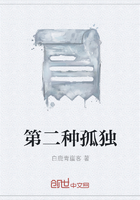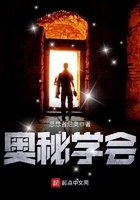He can see a panorama that is varied, extensive, beautiful to the eye, and more illustrious in history than any other in Europe.--About his feet is spread the remnant of a city that once had a population of four million souls; and among its massed edifices stand the ruins of temples, columns, and triumphal arches that knew the Cæsars, and the noonday of Roman splendor; and close by them, in unimpaired strength, is a drain of arched and heavy masonry that belonged to that older city which stood here before Romulus and Remus were born or Rome thought of. The Appian Way is here yet, and looking much as it did, perhaps, when the triumphal processions of the Emperors moved over it in other days bringing fettered princes from the confines of the earth. We can not see the long array of chariots and mail-clad men laden with the spoils of conquest, but we can imagine the pageant, after a fashion. We look out upon many objects of interest from the dome of St. Peter's; and last of all, almost at our feet, our eyes rest upon the building which was once the Inquisition. How times changed, between the older ages and the new! Some seventeen or eighteen centuries ago, the ignorant men of Rome were wont to put Christians in the arena of the Coliseum yonder, and turn the wild beasts in upon them for a show.
It was for a lesson as well. It was to teach the people to abhor and fear the new doctrine the followers of Christ were teaching. The beasts tore the victims limb from limb and made poor mangled corpses of them in the twinkling of an eye. But when the Christians came into power, when the holy Mother Church became mistress of the barbarians, she taught them the error of their ways by no such means. No, she put them in this pleasant Inquisition and pointed to the Blessed Redeemer, who was so gentle and so merciful toward all men, and they urged the barbarians to love him;and they did all they could to persuade them to love and honor him--first by twisting their thumbs out of joint with a screw; then by nipping their flesh with pincers--red-hot ones, because they are the most comfortable in cold weather; then by skinning them alive a little, and finally by roasting them in public. They always convinced those barbarians. The true religion, properly administered, as the good Mother Church used to administer it, is very, very soothing. It is wonderfully persuasive, also. There is a great difference between feeding parties to wild beasts and stirring up their finer feelings in an Inquisition. One is the system of degraded barbarians, the other of enlightened, civilized people. It is a great pity the playful Inquisition is no more.
I prefer not to describe St. Peter's. It has been done before. The ashes of Peter, the disciple of the Saviour, repose in a crypt under the baldacchino. We stood reverently in that place; so did we also in the Mamertine Prison, where he was confined, where he converted the soldiers, and where tradition says he caused a spring of water to flow in order that he might baptize them. But when they showed us the print of Peter's face in the hard stone of the prison wall and said he made that by falling up against it, we doubted.
And when, also, the monk at the church of San Sebastian showed us a paving-stone with two great footprints in it and said that Peter's feet made those, we lacked confidence again. Such things do not impress one. The monk said that angels came and liberated Peter from prison by night, and he started away from Rome by the Appian Way. The Saviour met him and told him to go back, which he did. Peter left those footprints in the stone upon which he stood at the time. It was not stated how it was ever discovered whose footprints they were, seeing the interview occurred secretly and at night.
The print of the face in the prison was that of a man of common size; the footprints were those of a man ten or twelve feet high. The discrepancy confirmed our unbelief.
We necessarily visited the Forum, where Cæsar was assassinated, and also the Tarpeian Rock. We saw the Dying Gladiator at the Capitol, and I think that even we appreciated that wonder of art; as much, perhaps, as we did that fearful story wrought in marble, in the Vatican--the Laocoon.
And then the Coliseum.
Every body knows the picture of the Coliseum; every body recognizes at once that "looped and windowed" bandbox with a side bitten out. Being rather isolated, it shows to better advantage than any other of the monuments of ancient Rome. Even the beautiful Pantheon, whose pagan altars uphold the cross, now, and whose Venus, tricked out in consecrated gimcracks, does reluctant duty as a Virgin Mary to-day, is built about with shabby houses and its stateliness sadly marred. But the monarch of all European ruins, the Coliseum, maintains that reserve and that royal seclusion which is proper to majesty. Weeds and flowers spring from its massy arches and its circling seats, and vines hang their fringes from its lofty walls.
An impressive silence broods over the monstrous structure where such multitudes of men and women were wont to assemble in other days. The butterflies have taken the places of the queens of fashion and beauty of eighteen centuries ago, and the lizards sun themselves in the sacred seat of the Emperor.
More vividly than all the written histories, the Coliseum tells the story of Rome's grandeur and Rome's decay. It is the worthiest type of both that exists. Moving about the Rome of to-day, we might find it hard to believe in her old magnificence and her millions of population; but with this stubborn evidence before us that she was obliged to have a theatre with sitting room for eighty thousand persons and standing room for twenty thousand more, to accommodate such of her citizens as required amusement, we find belief less difficult. The Coliseum is over one thousand six hundred feet long, seven hundred and fifty wide, and one hundred and sixty-five high.
Its shape is oval.















